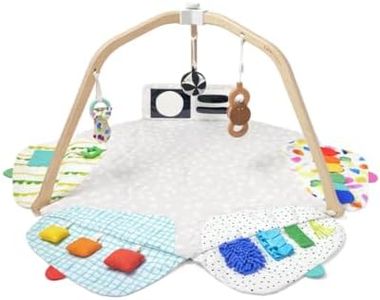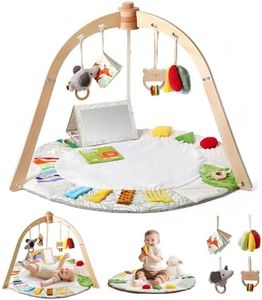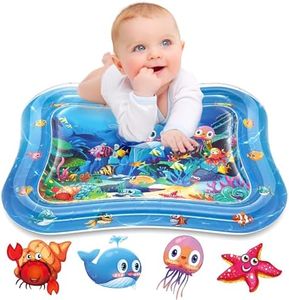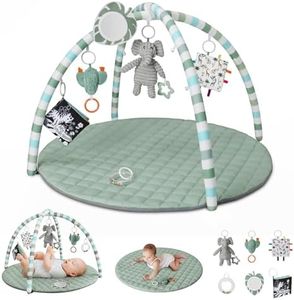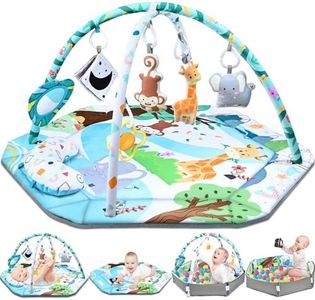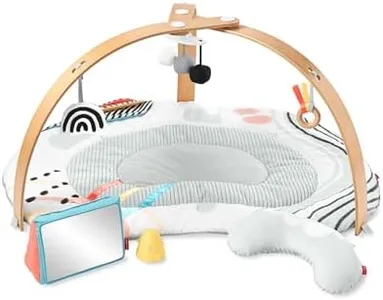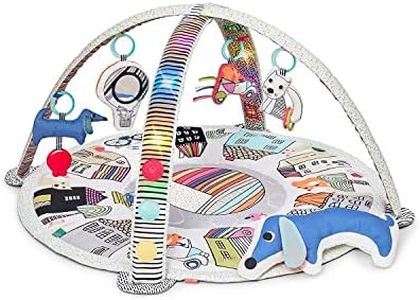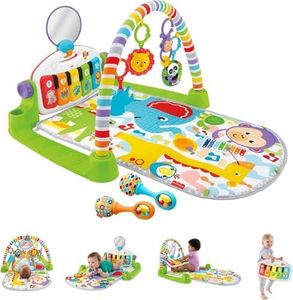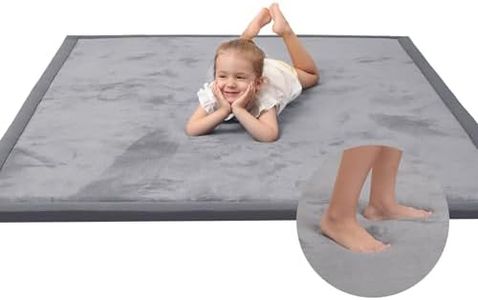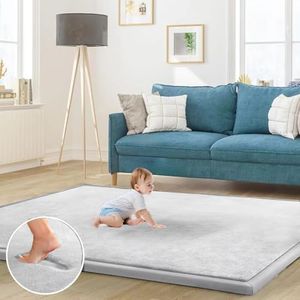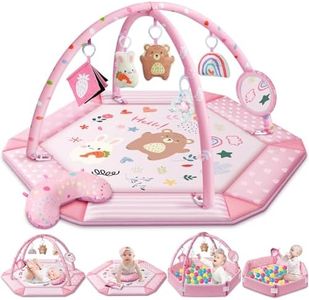We Use CookiesWe use cookies to enhance the security, performance,
functionality and for analytical and promotional activities. By continuing to browse this site you
are agreeing to our privacy policy
10 Best Tummy Time Mats
From leading brands and best sellers available on the web.Buying Guide for the Best Tummy Time Mats
Tummy time mats are important tools for babies' early development, helping them strengthen their neck, shoulders, and arms while encouraging exploration and sensory discovery. When choosing a tummy time mat, it's important to look for options that support your baby's safety and comfort, provide stimulating features, and are easy to maintain. Understanding the key factors will help you select a mat that suits your baby's age, developmental stage, and your parenting needs.Material and PaddingThe material and padding of a tummy time mat determine how comfortable and safe your baby will be while using it. Many mats use soft fabrics and foam, which help cushion your baby against hard floors and provide a cozy space for play. It's important to consider hypoallergenic options and check for any chemical-free or non-toxic certifications, as babies often put things in their mouths. Lightweight padding works well if you plan to use the mat for short periods on soft carpeting, while thicker, more supportive mats are ideal for hardwood or tile floors and longer tummy time sessions. Always align the mat's comfort level with where you'll use it and how long your baby tends to play.
Size and PortabilityThe size of the mat impacts how much room your baby has to move and play. Larger mats provide extra space for rolling, stretching, and adding toys, which can be helpful for older or more active babies. Smaller mats may be better suited for limited spaces or when you need something lightweight and travel-friendly. Consider where you’ll use the mat most often and whether you want the convenience of folding or rolling it up for visits or trips.
Safety FeaturesSafety is a key consideration for babies. Look for features such as non-slip backs to prevent sliding on smooth floors, smooth seams that won’t scratch, and materials free from small parts or loose attachments that could pose choking hazards. For parents concerned about messes or allergies, consider mats that are water-resistant or machine washable. Prioritize mats that meet safety standards and certifications relevant to your region.
Sensory and Developmental ElementsMany tummy time mats come with built-in sensory features like bright colors, textures, crinkly surfaces, mirrors, and attached toys that stimulate your baby’s sight, touch, and hearing. Simple mats without extra features offer a neutral space, which can be great if you want to add your own toys, while more elaborate mats promote engagement and longer play. Consider your baby’s age and interest—young babies may enjoy high-contrast patterns and soft textures, while older babies might benefit from interactive elements that encourage reaching and grasping.
Ease of CleaningBabies can be messy, so it’s important to think about how easy the mat is to clean. Mats with removable, machine-washable covers are the most convenient for deep cleaning, while waterproof mats can be quickly wiped down between uses. Mats that can be spot-cleaned are fine for occasional or travel use, but busy parents may appreciate the ability to thoroughly wash the entire mat after spills or accidents. Match your cleaning preference to how you’ll use the mat and your baby’s stage.
